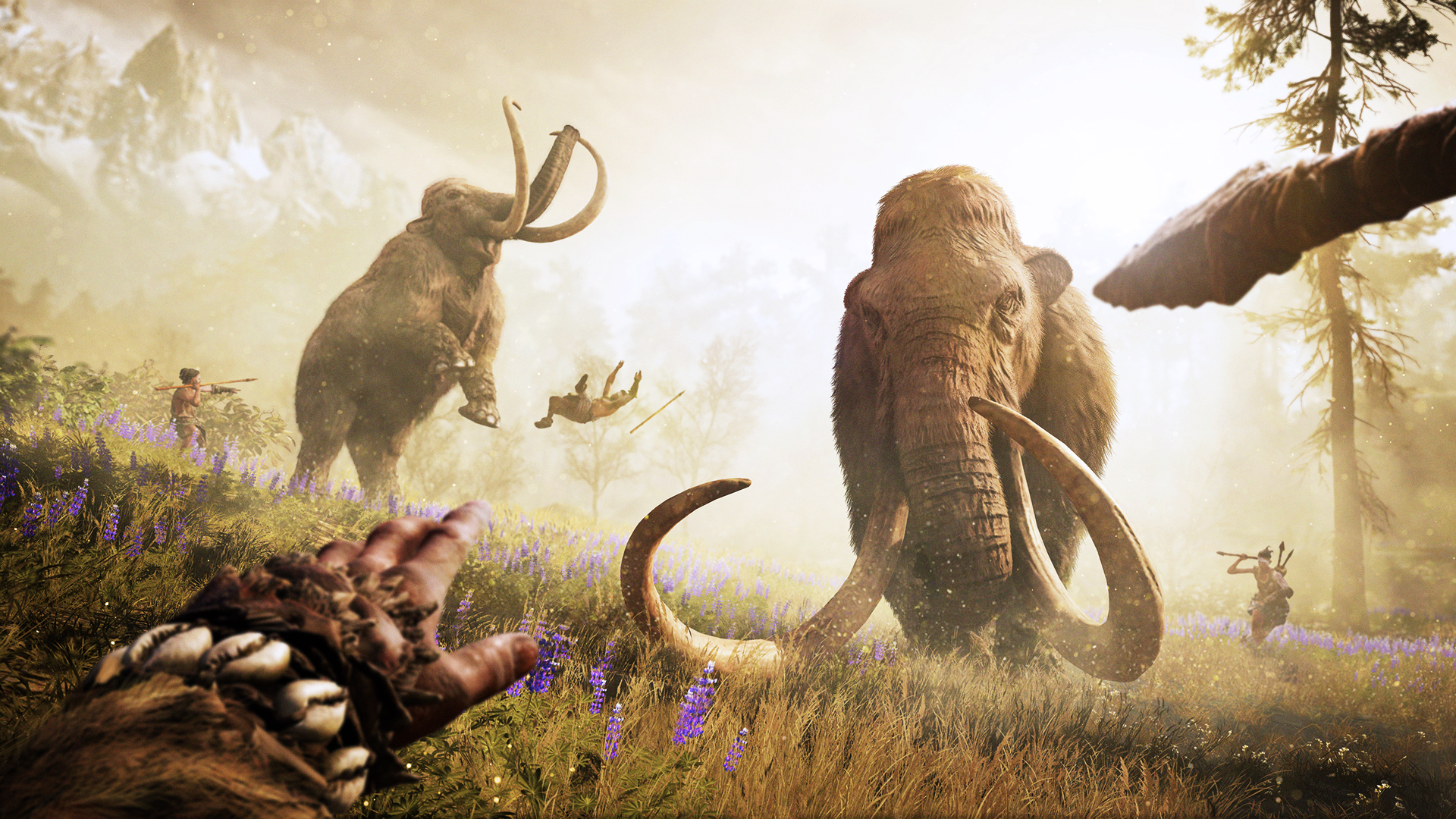“Far Cry Primal’s” stone age setting is a breath of fresh air in a game that is otherwise quite formulaic and overly familiar.
Ubisoft set the standard for a great open world first-person shooter in 2012 with “Far Cry 3.” It took the base capturing, collectible hunting fun of “Assassin’s Creed” to the realistic immersion of “Far Cry.” 2014’s “Far Cry 4” iterated on this style, but remained an incredibly entertaining experience, thanks in part to the addition of open world co-op.
This year’s “Far Cry Primal” follows the style of previous games a bit too closely in places that it should not. The biggest problem I had with the game was that I have already done its activities countless times before in previous entries. Thankfully, the stone age setting adds new life to the world. The amount of fun I had playing around in the environment caught me off guard.
The core mechanic driving Primal is the ability to tame and control beasts you encounter. This starts off relatively simple, allowing you to have a wolf companion and use an owl to scope out enemies. But by the time you are a fully-upgraded beast master, you can ride around on the backs of saber-toothed tigers and enter the mind of a wooly mammoth. Unlocking new tiers of powerful beasts is rewarding and each time I tamed a new one, I was excited to pit it against other powerful creatures to see how it fights.
The environments are beautiful and the world feels expansive enough to warrant the full game price tag that this game comes with. I had a significant problem with the ability to ride a mini helicopter around in “Far Cry 4.” Being able to see how small the world actually was broke the immersion for me. I have also never enjoyed vehicles in “Far Cry.” They removed the need to walk around and experience the life in the world around you. Now that Primal has removed that aspect, the world feels more alive and gives the impression that it is quite large. While riding around on animals does feel like using vehicles did, this ability isn’t accessible for quite a while, which gives the player plenty of time to have to run around the world and take in everything the game has to offer.
When I talk about the “Far Cry” formula, I specifically mean capturing outposts in the world by taking out human enemies with stealth or brute force. This is back in Primal, but I did not enjoy it as much without guns. Aside from using a bow, there is not much opportunity for stealth, which was my favorite way to take outposts.
The combat and weapon variety in Primal works quite well and fits the setting appropriately. I expected to dislike the lack of guns in the game, but by the time I had a club, bow and spear, I was engrossed enough in being a caveman that using these primitive weapons felt right. Furthermore, the weapons are used in interesting ways with the environment. There is a day-night cycle that affects the behavior of the animals. Wolves travel in packs and become more active at night, amid the decreased visibility. To counter this, the player can easily ignite his club to light the area and scare off creatures. Later in the game, in the colder snowy areas, players must monitor their cold level with their torch, which dies off as it burns, forcing players to craft new clubs with resources.
These gameplay additions work well with the setting and feel new enough to counter the overly familiar structure of the game. Whether the player finds enough to do to warrant the full price tag, depends on how much he or she likes the setting. But Primal does enough mechanically to distinguish itself and by the time everything is accessible, it becomes one of the most exciting “Far Cry” games to play.


